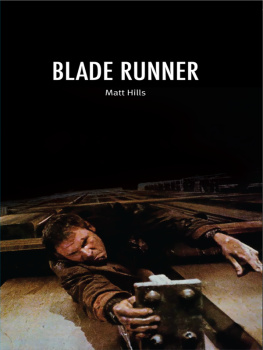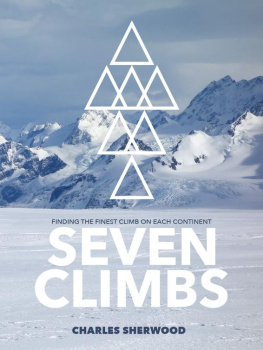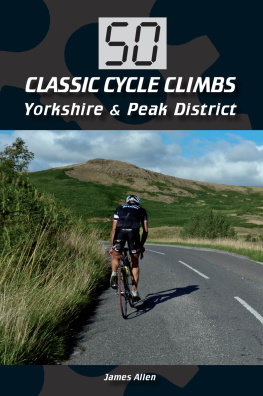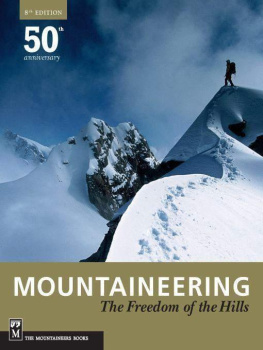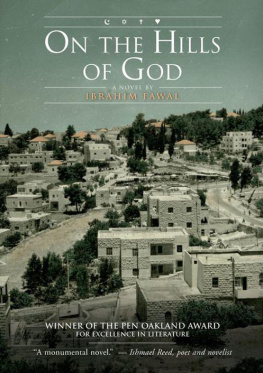HOW TO CLIMB HILLS
LIKE A PRO
Never get dropped!
A guide for cyclists and triathletes
nd Edition
Updated & Upgraded
by Brett Lee Scott
Table of Contents
WHY CLIMB HILLS?
In order to be a better cyclist, you have to develop the ability to climb hills well.
Riding hills is really all about the technique, staying relaxed and being efficient. But remember: no one technique is going to work for every rider.
It takes a bit of experimentation, but there isnt a right or wrong. Its about what works for the rider. Everyone is different. Everyone feels more comfortable in different positions and efficiency is individual to the rider.
WHY DO I GET DROPPED ON THE CLIMBS?
This is perhaps the single most asked question by athletes who come to me wanting coaching. I share my advice below with typical causes of this problem based on amateurs.
1) You don't have enough practice of climbing hills.
Simple as that. You may be great on the straights or on your indoor trainer but if you haven't had sufficient time in real world climbing situations, you will suffer.
2) You are overweight (think power-weight ratio).
You could easily lose a couple of pounds/kg before splurging out on new equipment.
3) You are tired.
This is an extremely common and often overlooked cause. Many athletes lose power on climbs because they raced a few days earlier or cranked up their training volumes.
You may feel fine during the ride but suddenly hit the wall when you reach the climb. This is a common sign of over-training or under-recovery. A tough training session takes a good 3-7 days to recover from and it's in climbing that the lack of recovery will be most felt.
4) Your Chainset is set up wrong
See the section on Setting Up Your Bike. You may be riding a bike that is not set up to climb very well. All very good if you are time trialling but if you have to spin up hills, you may suffer unnecessarily and lose energy economy to other riders.
5) Your Approach
What is your hill climbing strategy? This book covers a number of strategies for breaking down climbs that may be new to you and help you overcome existing weaknesses.
6) Going Too Hard
This is a common problem, especially for riders who find themselves in a club situation or riding with others who like to attack hills. It's easy to be drawn into these situations and you may find you lose out because your fitness or experience isn't enough to sustain these repetitive heavy workloads.
7) You are not Fit Enough
Climbing requires a base level of cardiovascular fitness and high end power to get you up over the hill. You may find that you are good at some hills but not others. If you are good at short, sharp hills but fade on the longer slopes then you have the necessary strength but either lack the endurance or are too heavy or need to address your Chainset. If you are good at long looping hills but fade on the short sharp inclines, you would benefit from strength training to boost your power output.
HOW DO YOU GET GOOD AT CLIMBING HILLS?
There is no short cut to becoming a good climber.
My best advice to you is to go climb hills.
You won't get good at climbing hills on an indoor trainer or at the gym without a significant amount of time on the hills you want to climb.
Climbing hills requires work and often months if not years of ingrained muscle memory.
You can, however, accelerate up the learning curve using the techniques I share with my athletes in this book. Some of the advice focuses on equipment, some on your technique, some on your own physique.
SETTING UP YOUR BIKE TO CLIMB HILLS
You are 5 equipment choices that can have a significant impact on your ability to climb hills:
1) Your choice of bike
2) Bike weight
3) Chain set and gearing
4) Wheels and tire pressure
5) Excess weight
1) Your choice of bike
Specifically we are interested in the difference in performance between a standard road bike and a TT/triathlon bike.
TT/tri bikes perform best on long flat surfaces where the cyclist can boom out a consistent high wattage. On these bikes, in aero position, most Age Groupers can maintain speeds of 40km+ for extended periods without significant discomfort. However, TT bikes are at a disadvantage when climbing.
Road bikes offer more hand options for climbing. Unlike the TT bike, you have greater control at the front of the bike enabling you to work harder on the climbs. Furthermore, road bikes are far better suited for descents. Although the TT bike may be faster on the flats, road bikes are often sturdier and offer greater confidence to the rider when descending at speed. It's all very well learning to climb, but you have to descend as well.
2) Bike weight
Pro cyclists are limited by how light their bikes can be today. All pros ride at more or less the same weight on their bikes. For amateurs, however, there are no such limits.
While cost prohibits most amateurs coming near the level of the pros in terms of lightness of bike, you will find that few consider the weight of their bikes when they purchase them. A bike may look fast (and cool) but how well do those looks translate to weight on the road?
A lighter bike is what the pros call free speed.
Consider the back-of-envelope physics:
For a tough climb of, say, 700 meters over 10km (a 7% gradient) a climb worthy of a lower mountain stage in the Tour de France every 1kg in weight gained would add 1 minute in your time based on constant output alone. The last part is crucial because shifting 1 extra kilo up a 7% gradient will require an increase in power output (watts) and subsequent heart rate. Once you factor in the physiology you are looking more at a 3-4 minute loss in time. So riding a 2kg heavier bike could lose you 6-8 minutes on a climb and that's only 1 climb.
3) Chainset and gearing
The Chainset is the round disc that sits in the center of your bike. Your pedals are attached to the Chainset through the crank (the handle). Cranking the handle drives the Chainset which turns the chain.
The chain rides on either the outer chainring or the inner chainring, often called the Big ring and Little ring respectively. One set of your gears at the front of your bike will switch between the Big and Little ring, one will shift the cassette at the back of your bike.
You'll notice that riding on the Big Ring is like the higher gears on your car it requires far more power, turns slower but can generate higher speeds. The Little Ring is useful for lower speeds or climbing.
If you study your Chainset you will see a number that tells you the number of teeth in both the Big Ring and the Little Ring. The combination will look something like this:
52/39 or 53/43
The larger number corresponds to the Big Ring.
The reason why it's important to familiarize yourself with your Chainset is that this setup can have a significant impact on your ability to climb.
Let's have a look at the different standard Chainsets on the market:
56/43 (Time trial chainset)
This Chainset suits the powerful cyclist and is useful for cyclists who won't be spending much time at low speeds and need to boom out long, consistent high speeds over flat courses (e.g. time trialists). Climbing on this Chainset will require a lot of work and often forces riders out of the seat to crunch out the gears.
53/42 or 53/43 (Age grouper time trial)
The 53/42 Chainset is still found on some bikes but losing popularity. The Chainset offers little variation in gearing compared to the more powerful bigger rings or smaller climbing rings. While this combination is still offered it isn't well suited to any specific terrain. For Age Groupers this Chainset will require extra work on the climbs and is not necessarily recommended on hilly courses.
Next page


